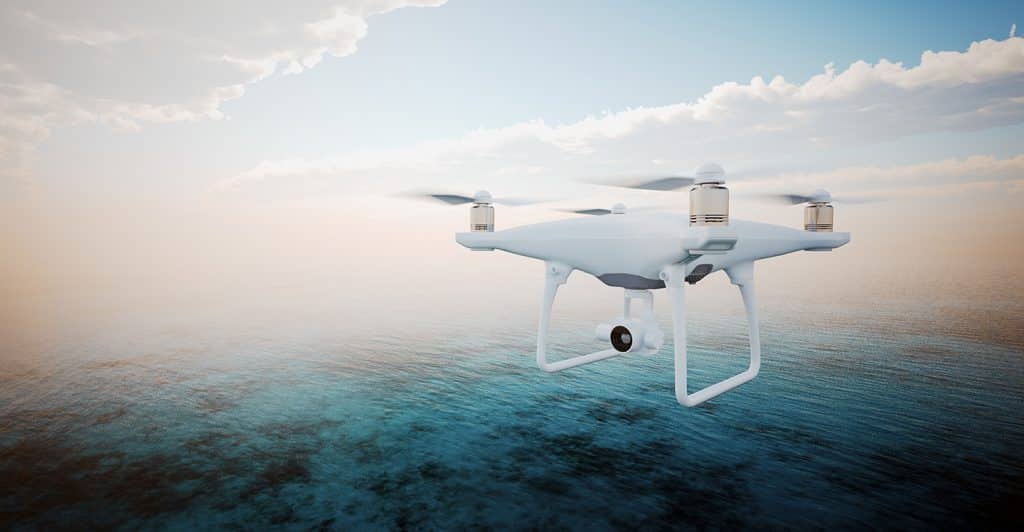
The prospect of flying over water can be a scary one for most drone pilots. Water environments are often filled with potential hazards such as boats, waves, high winds, and even birds. Despite these hazards, professional aerial photographers and videographers may sometimes have to fly over water in order to capture the perfect shot! Below we have outlined some tips on what you can do before and during your over water flight to ensure safety.
-
Plan Your Shot
Flying over water is always risky, but careful planning can help you avoid danger. Planning a shoot should include finding the right location, visualising your ideal image/video, and doing a few test shots on land to make sure the angle is right. Going through these steps can help to ensure a smoothly executed shot.
-
Enable Maximum Flight Distance
Although it can be tempting to fly long distances over water, always operate your drone within line of sight.
-
Practice
For obvious reasons, we recommend that you practice your take off, flying, and landing skills on land first before heading out over water. Mastering these skills will result in better control, increased confidence, and an overall safer flight in any location.
When flying over water, there are often two options: starting from land or starting from a boat. Take-off from land is no different from a regular land flight. When starting from a boat, however, we recommend you take-off while the boat is idle as it will be more stable and safer. Take-off from a from moving boat is possible at slow speeds but is not recommended.
-
Update Your Home Point Manually
When flying over land, the home point is usually where the aircraft took off from. Under ideal conditions, the aircraft will use its compass and GPS to automatically record a home point. Using the original home point from a boat can be rather tricky as boats will often drift or move during flight. Because of this is may be necessary to re-set your home point.
-
Avoid Obstacles
Many obstacles can endanger your journey over water, below we have outlined the ones you need to watch out for the most:
-
Objects That Interfere With Compass Or GPS Signal
Strong compass and GPS signals are essential when operating a drone. Make sure you avoid any objects or structures that have the potential to interfere with your signal. These include large objects like lighthouses and container ships, or any device that uses antennas, magnets, or Wi-Fi.
-
Natural Objects
When flying in areas near water, be sure to avoid trees, rocks or any other natural structures nearby. Also pay close attention to birds, as seagulls in particular are known to exhibit aggressive behaviour towards drones.
-
Waves
Waves can be dangerous when flying too close to the waters surface, requiring pilots to react fast or risk losing their drone. Make sure you stay far enough above the surface to avoid this issue entirely.
-
Boats
Boats of all sizes can be potentially hazardous for drones. Don’t fly too close to any boat, and as an added precaution, set your return-to-home height higher any time you are flying near a boat (especially a cruise ship or container ship).
Make sure you stay alert to these and other obstacles during your flight over water. If you notice any potential hazards it is always recommended you keep your drone on land and wait for a safer time to fly.
-
Be Aware Of Wind Speed
As drone pilots know well, strong winds can result in aircraft instability during flight. Strong winds can also cause your battery levels to drop quickly. Unfortunately, wind is hard to avoid, and the higher up you go, the stronger it often gets. If you notice strong winds on the ground, its safe to assume there are even stronger winds in the air and you may want to consider delaying your flight.
With Coverdrone, you will always have peace of mind whilst flying over water, as you are fully covered. However, flying over water can be dangerous and even an instant of carelessness can result in a damaged or lost drone. As a pilot, always pay attention to your surroundings and focus on safely controlling your drone. If you follow these tips, your chances of having a fun, safe, and most importantly dry flight will be greatly increased!
